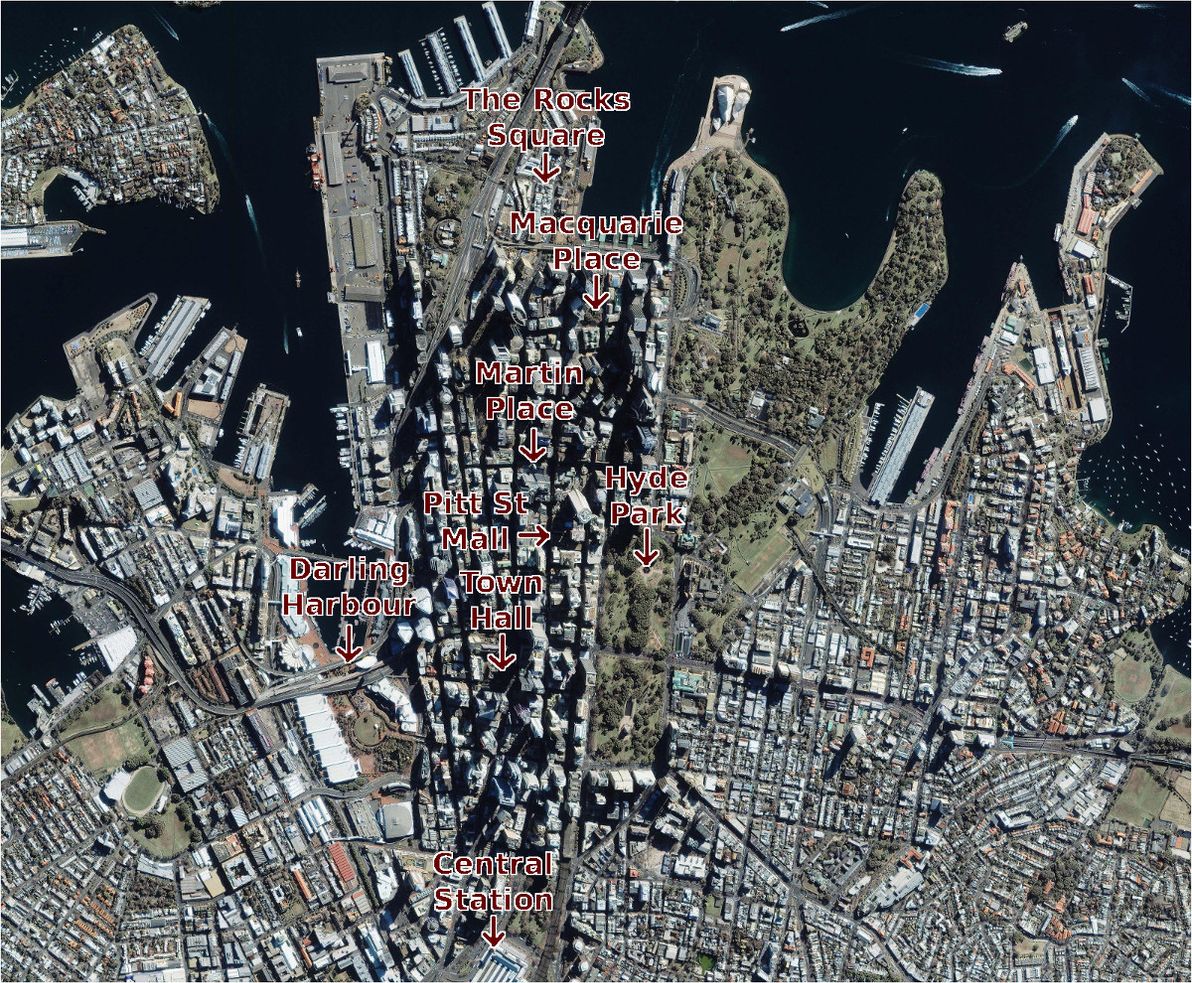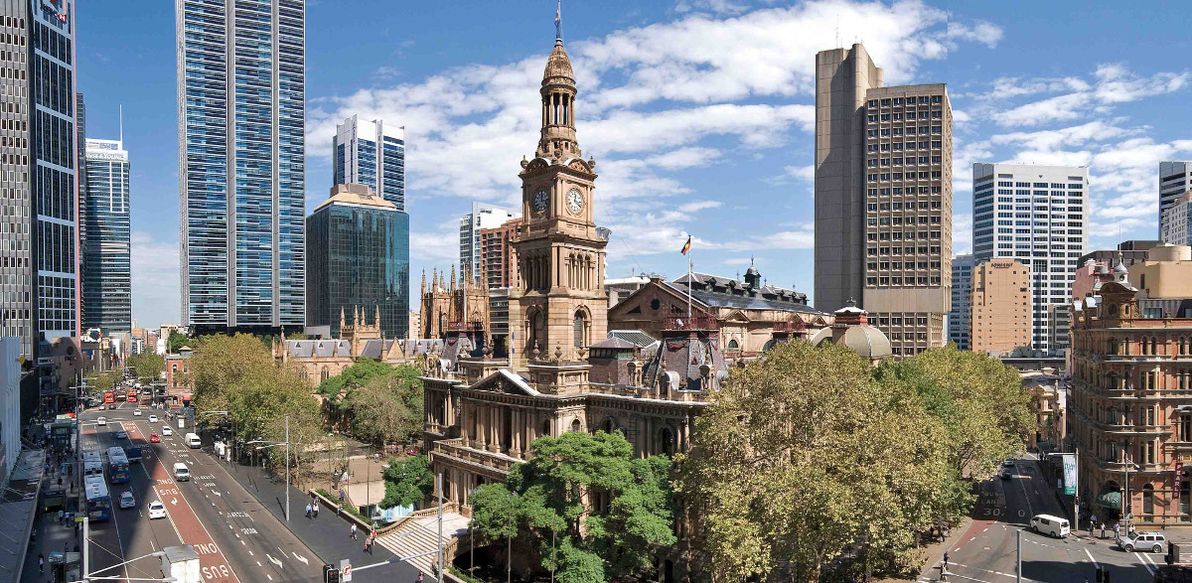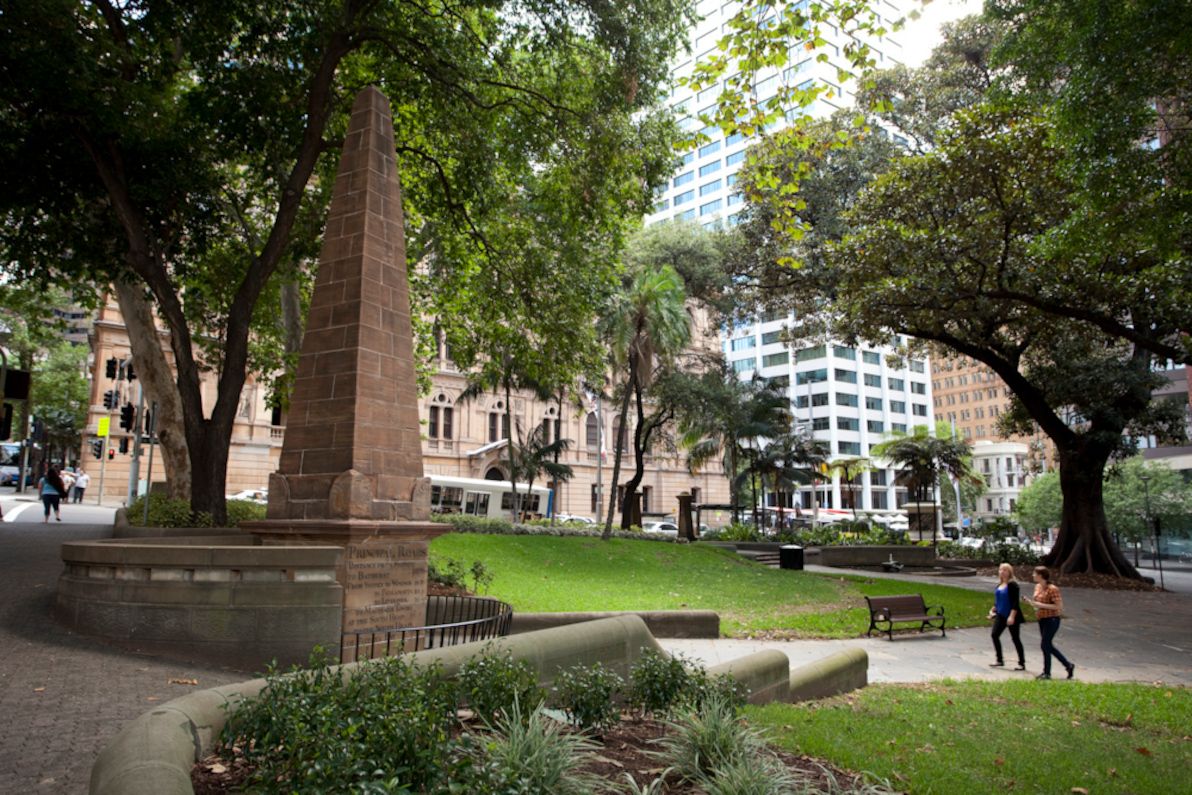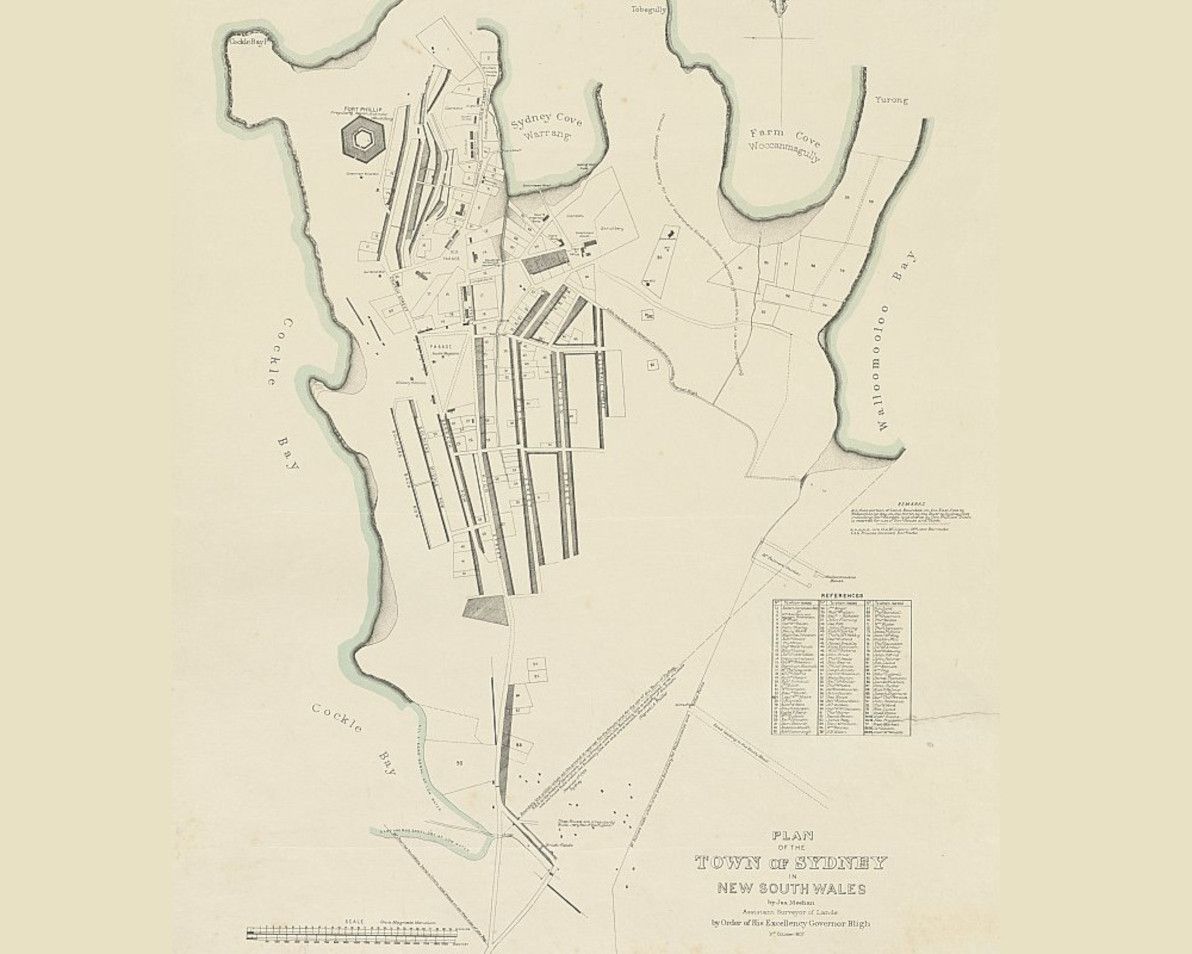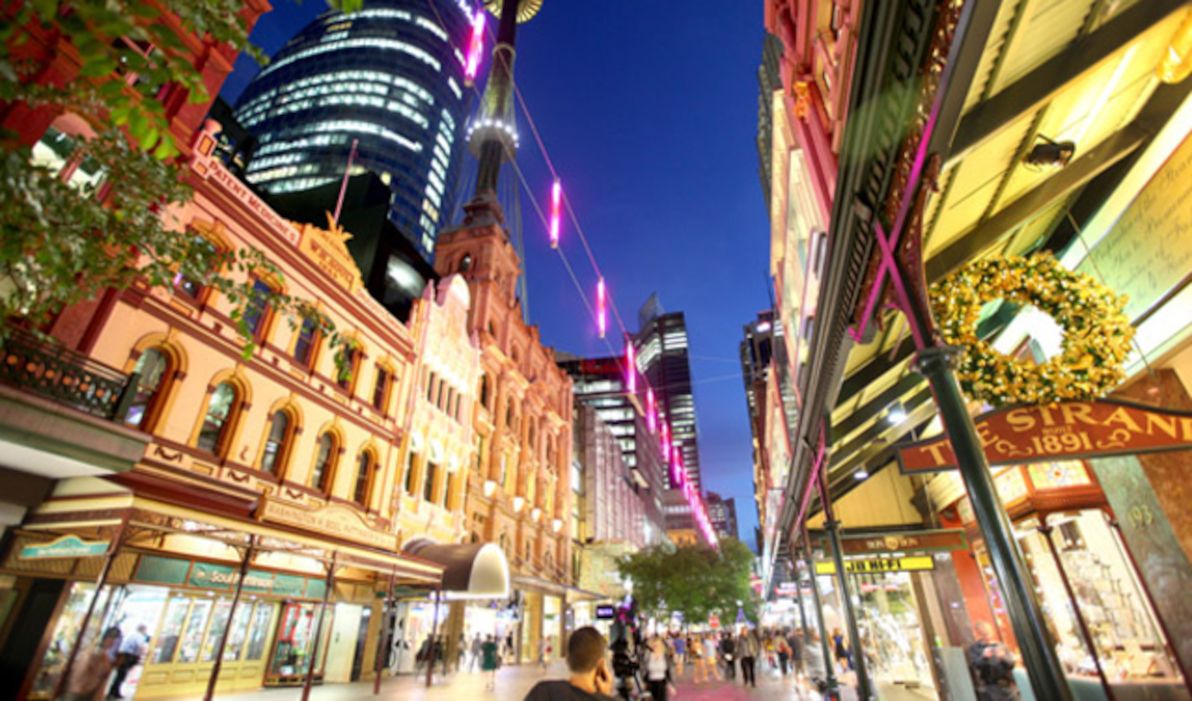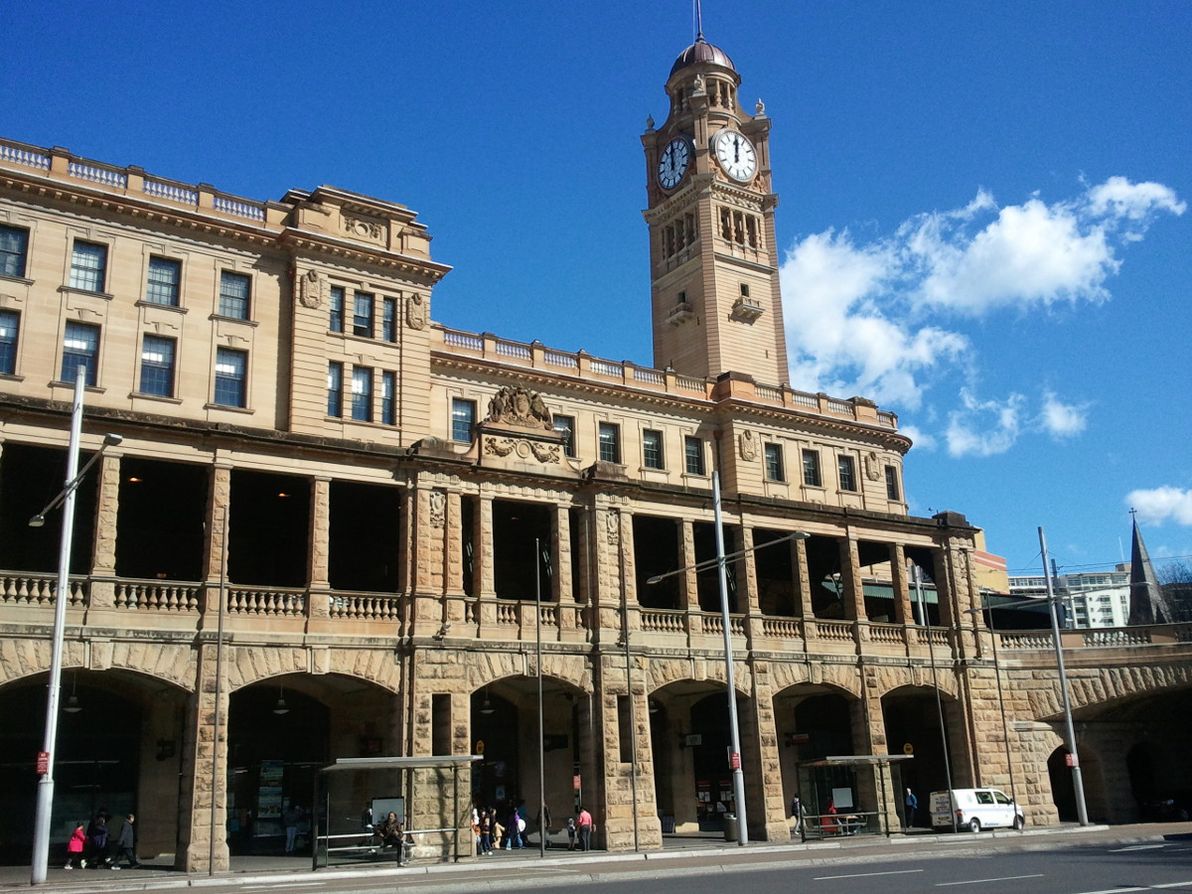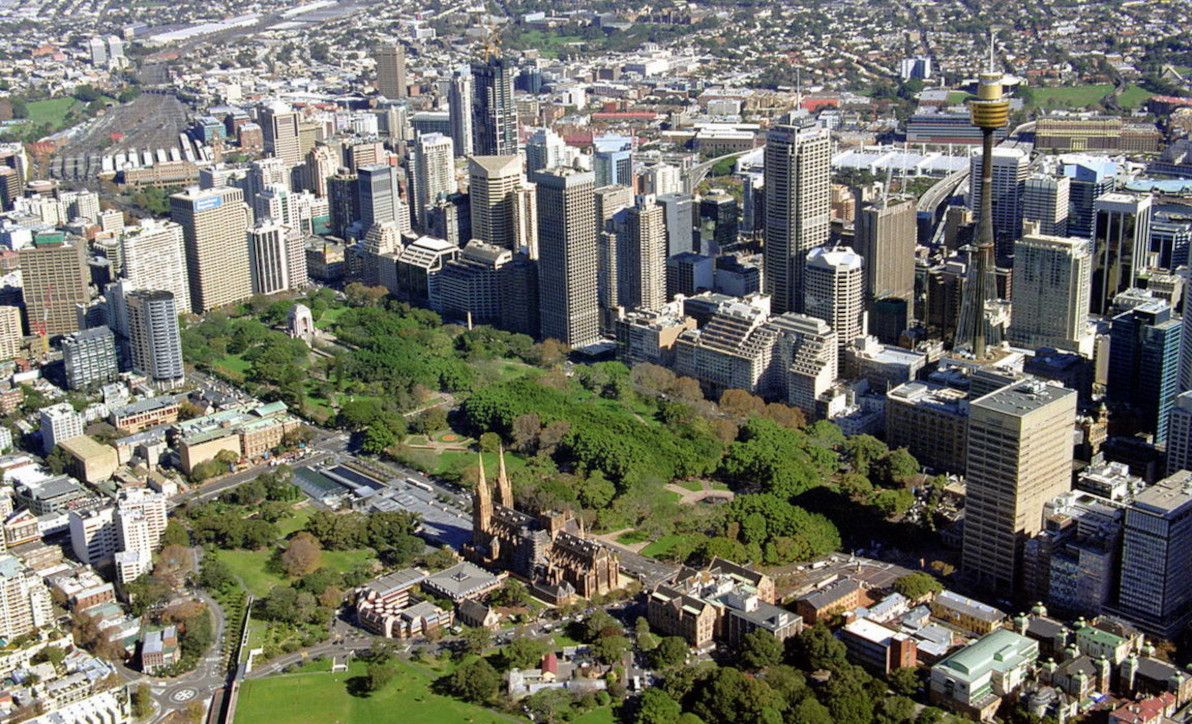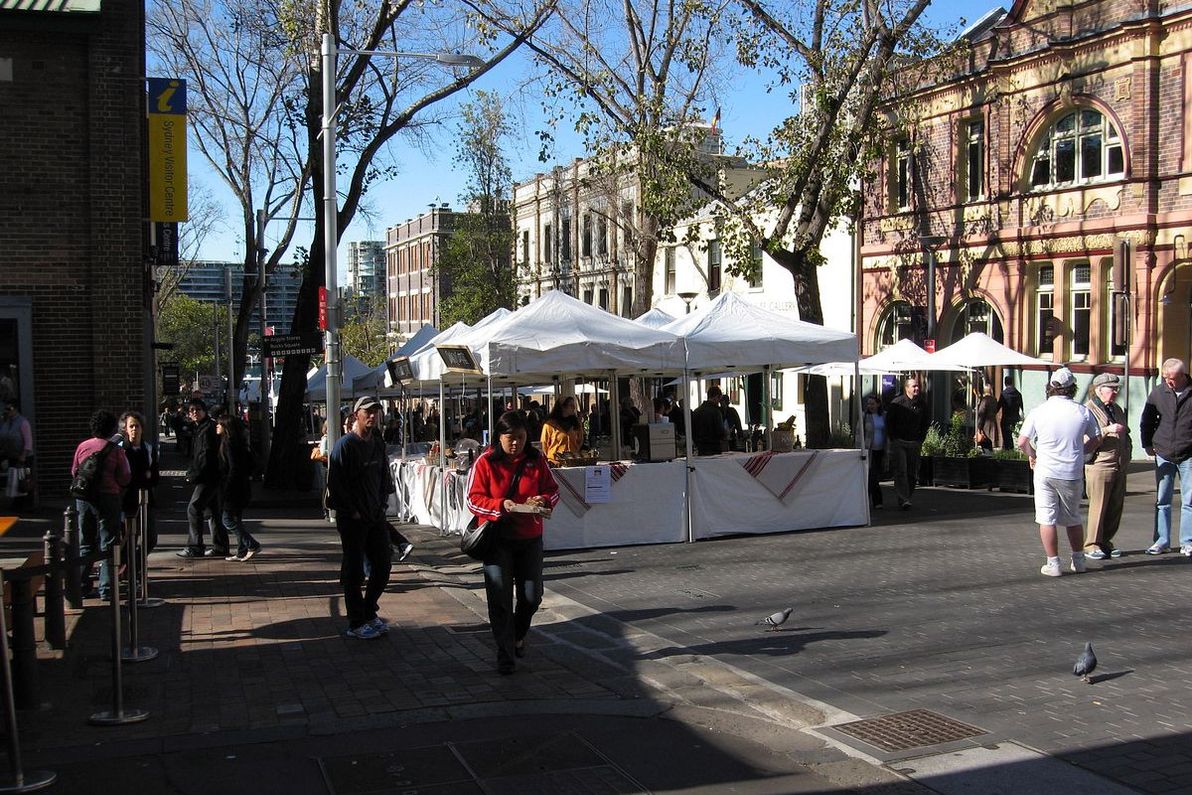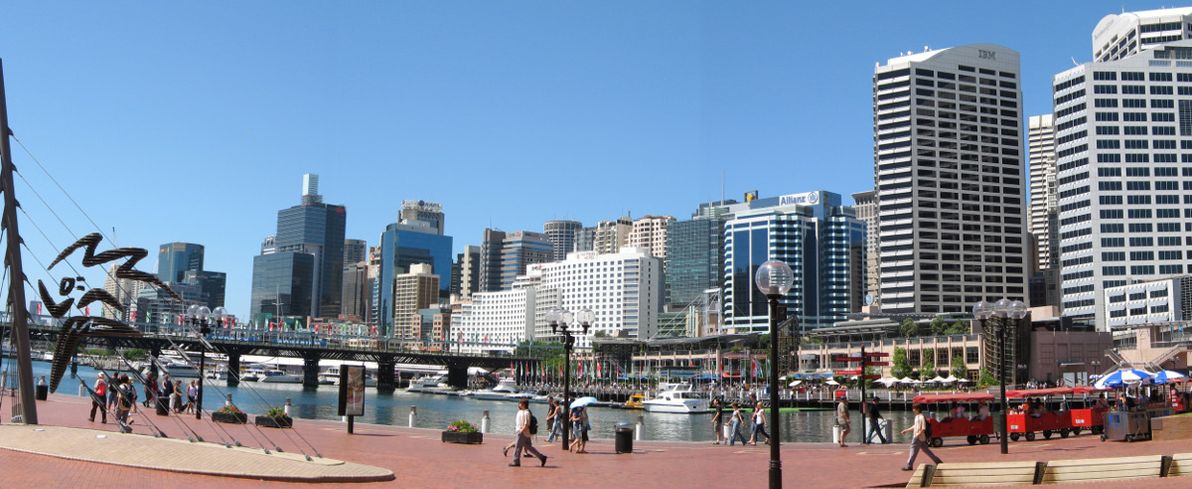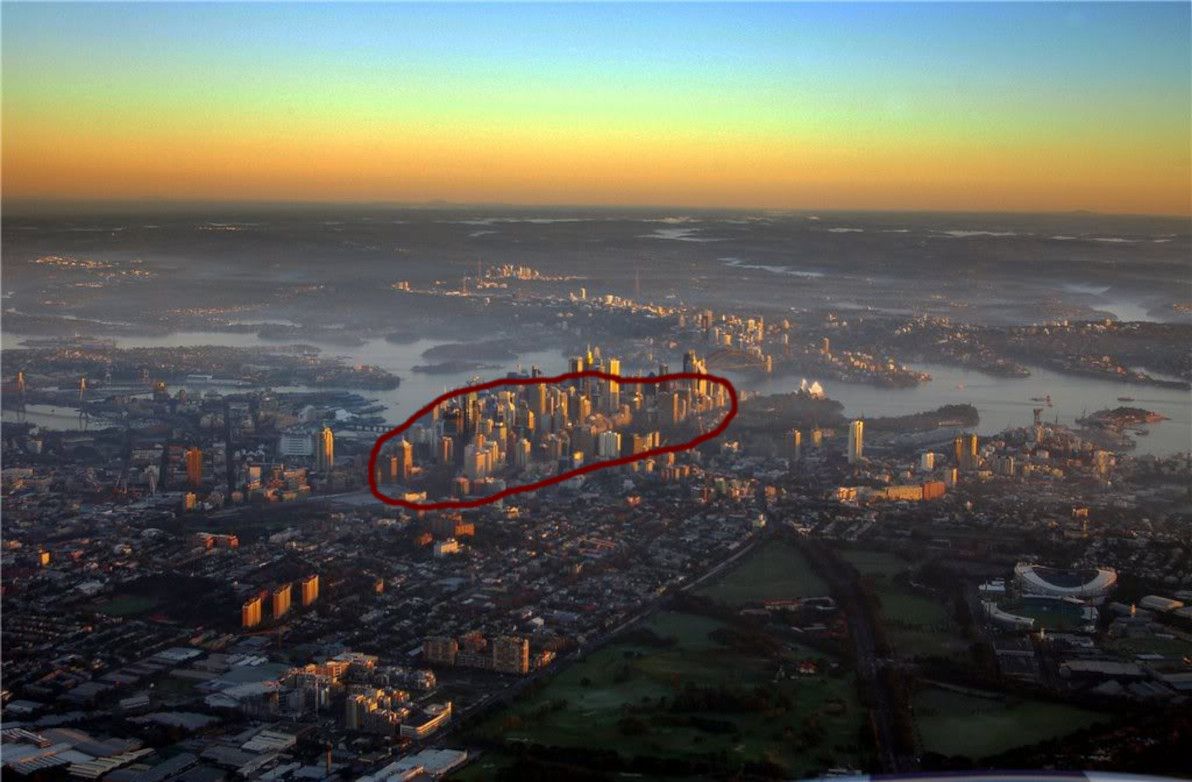Note: all population statistics are the latest numbers on relevant country- or city-level Wikipedia pages, as of writing, and all are for the cities' metropolitan area or closest available equivalent. The list is presented in alphabetical order by country.
Australia: Sydney and Melbourne
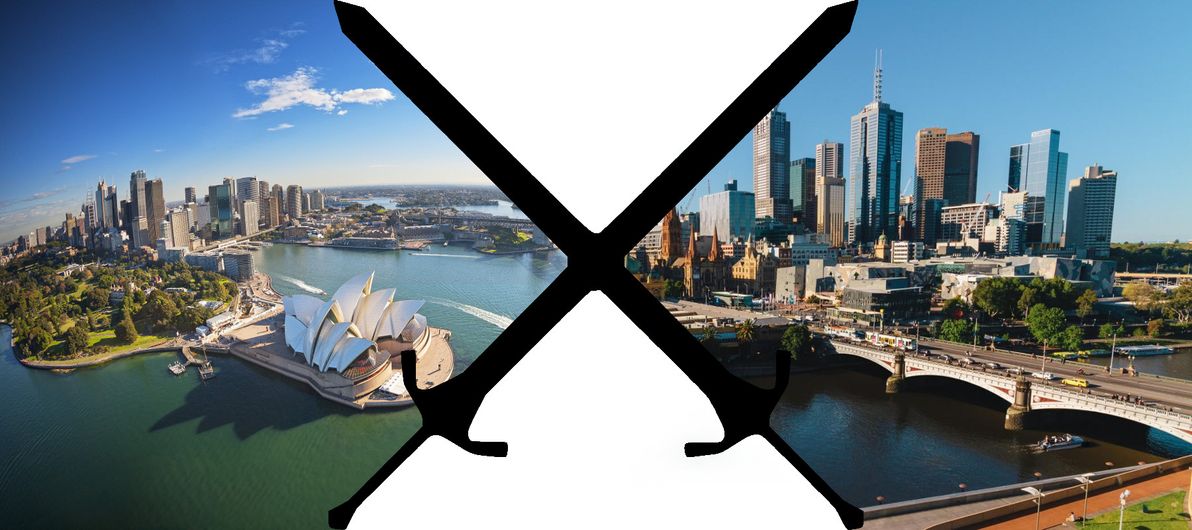
Image sources: Visit NSW, Tourism Australia.
As all my fellow Aussies can attest, Sydney (pop: 4.9m) and Melbourne (pop: 4.5m) well and truly deserve to be at the top of this list. Arguably, no other two cities in the world are such closely-matched rivals. As well as their similarity in population size and economic prowess, Sydney and Melbourne have also been ruthlessly competing for cultural, political and touristic dominance, for most of Australia's (admittedly short) history.
Both cities have hosted the Summer Olympics (Melbourne in 1956, Sydney in 2000). Sydney narrowly leads in population and economic terms, but Melbourne proudly boasts being "the cultural capital of Australia". The national capital, Canberra, was built roughly halfway between Sydney and Melbourne, precisely because the two cities couldn't agree on which one should be the capital.
China: Shanghai and Beijing
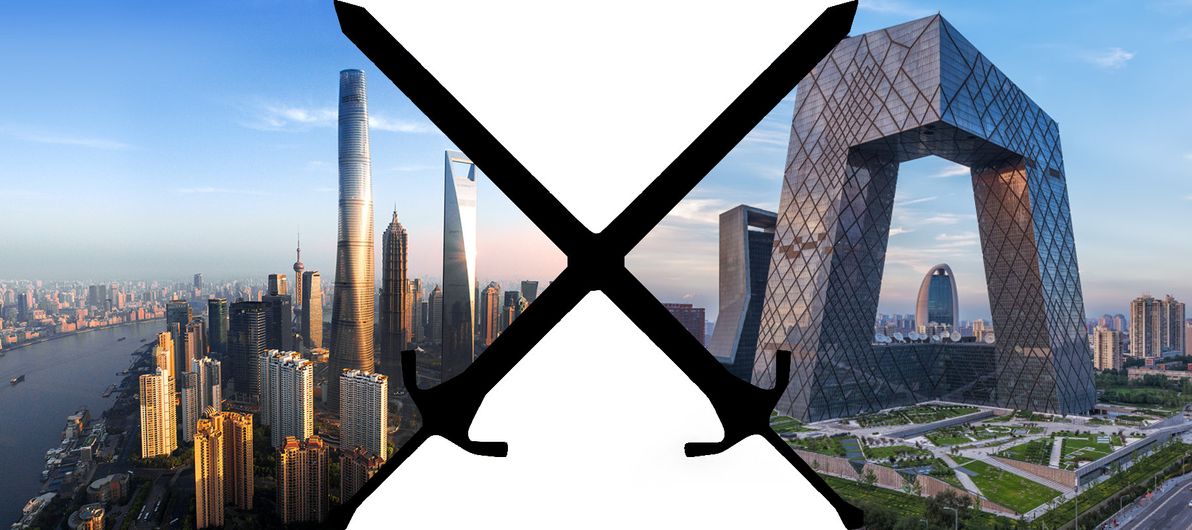
Image sources: Gensler Design, MapQuest.
In the world's most populous country, the port city Shanghai (pop: 24.5m) and the capital Beijing (pop: 21.1m) compete to be Number One. These days, Shanghai is marginally winning on the population and economic fronts, but Beijing undoubtedly takes the lead in the political, cultural and historic spheres.
It should also be noted that China's third-most populous city, Guangzhou (pop: 20.8m), and its (arguably) fourth-most populous city, Shenzhen (pop: 18m), are close runners-up to Shanghai and Beijing in population and economic terms. The neighbouring cities of Guangzhou and Shenzhen, together with other adjacent towns and cities, make up what is now the world's most populous urban area, the Pearl River Delta Megacity. This area has a population of 44m, which can even jump to 54m if the nearby islands of Hong Kong are included.
Ecuador: Guayaquil and Quito
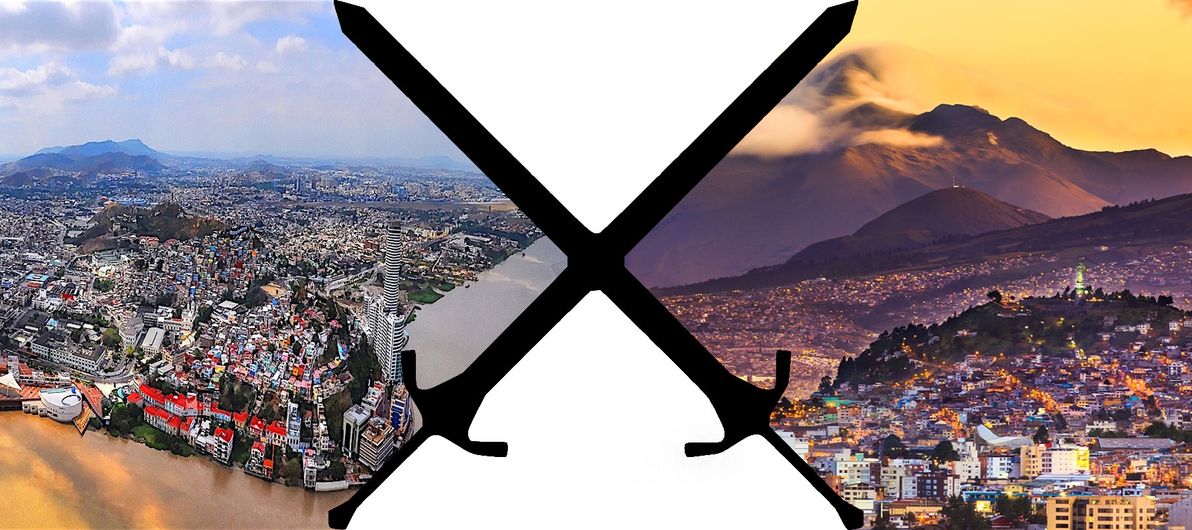
Image sources: Grand Hotel Guayaquil, Lonely Planet.
Ecuador's port city Guayaquil (pop: 5.0m) and its capital Quito (pop: 4.2m) are the only pair of cities from Latin America to feature on the list. Most Latin American countries are well and truly dominated by one big urban area. In Ecuador, Guayaquil is the economic powerhouse, while Quito is the nation's political and cultural heart.
Germany: Berlin and Hamburg
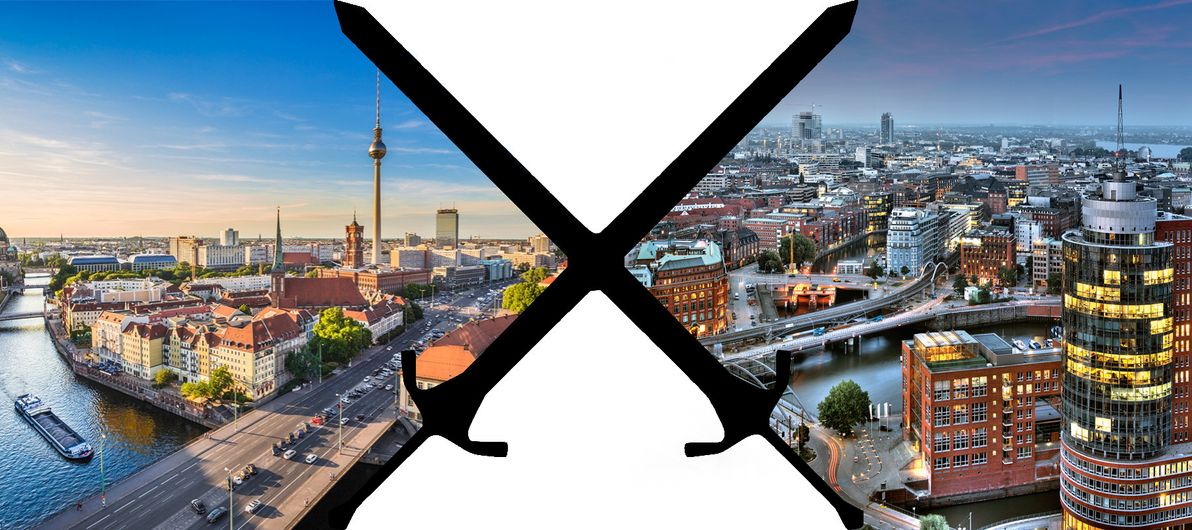
Image sources: Slate, Educational Geography.
The urban areas of the capital Berlin (pop: 6.0m) and the port city Hamburg (pop: 5.1m) are (arguably) the two largest in the Bundesrepublik Deutschland. These cities vie closely for economic muscle, and both are also rich historic and cultural centres of Germany.
However, Germany is truly one of the most balanced countries in the world, in terms of having numerous cities that contend for being the top population and economic centre of the land. There are also Munich (pop: 4.5m) and Stuttgart (pop: 4.0m), the southernmost of the nation's big cities. Plus there are the "urban mega-regions" of the Ruhr (pop: 8.5m), and Frankfurt Rhine-Main (pop: 5.8m), which are too spread-out to be considered single metropolitan areas (and which lack a single metro area with the large population of the big cities), but which are key centres nonetheless. Unsurprisingly, the very geographical layout of the nation's cities are yet another testament to German planning and efficiency.
Italy: Rome and Milan
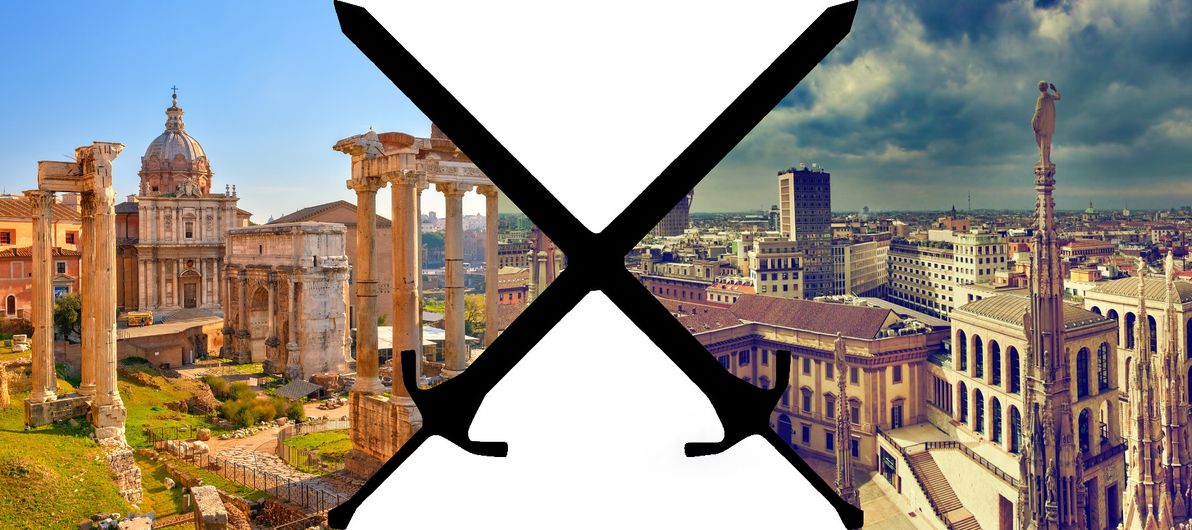
Image sources: Amalfi Coast Destination, I Like Going Out.
In La Bella Italia, Rome (pop: 4.3m) and Milan (pop: 4.2m) are the two most populous cities by a fair stretch. With its formidable fashion and finance industries (among many others), Milan is quite clearly the top economic centre of Italy.
In terms of culture, few other pairs of cities can boast such a grand and glorious rivalry as that of Rome and Milan. Naturally, with its Roman Empire legacy, and as the home of the Vatican (making Rome virtually unique globally in being a city with another country inside it!), Rome wins hands-down on the historical, political and touristic fronts. But in terms of art, cuisine, and media (to name a few), Milan packs a good punch. However, most everywhere in Italy pulls ahead of its weight in those areas, including the next-largest urban areas of Naples, Turin, Venice and Florence.
India: Delhi and Mumbai
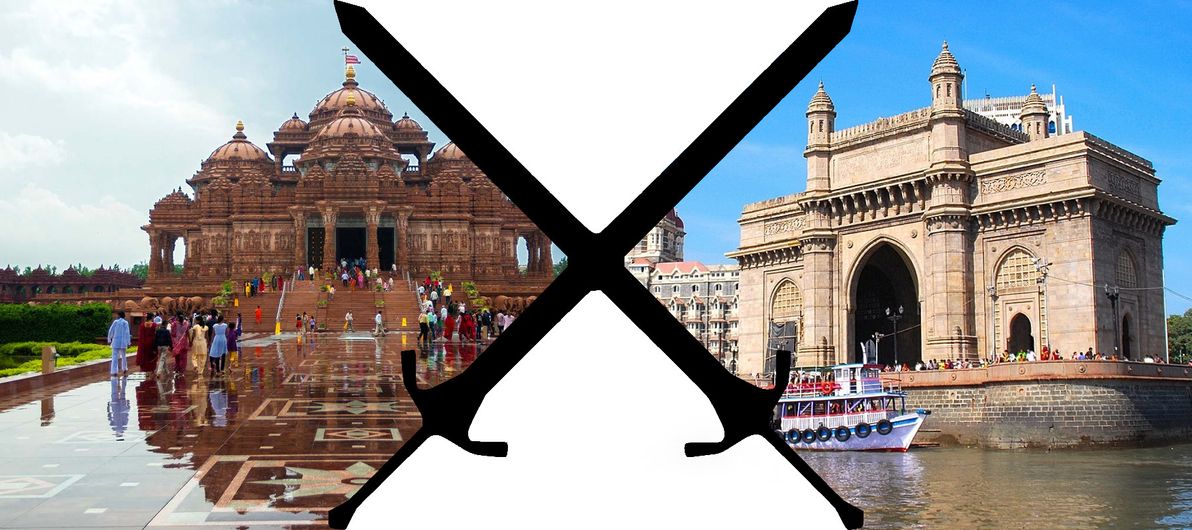
Image sources: Swaminarayan Akshardham New Delhi, FSSAI Consultants in Mumbai.
In the world's second-most-populous country, the mega-cities of Delhi (pop: 21.8m) and Mumbai (pop: 20.8m) compete for people, business, and chaos. Delhi takes the cake politically, culturally, historically, and (as I can attest from personal experience) chaotically. Mumbai, a much newer city – only really having come into existence since the days of the British Raj – is the winner economically.
The next most populous cities of India – Kolkata, Bangalore, and Chennai – are also massive population centres in their own right, and they're not far behind Delhi and Mumbai in terms of national importance.
South Africa: Johannesburg and Cape Town
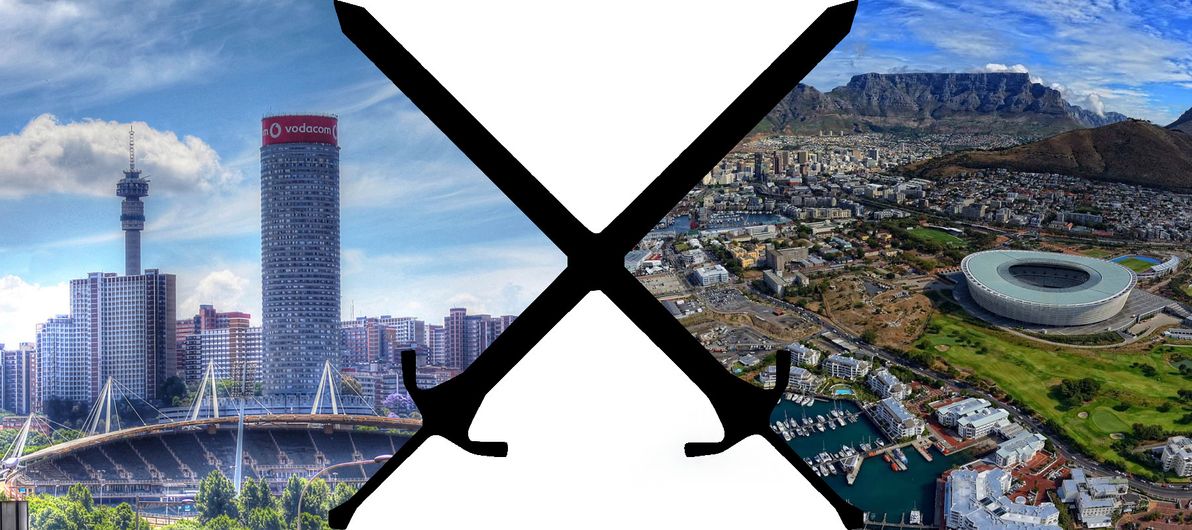
Image sources: Awesome Work and Travel, Cape Town International Airport.
South Africa is the only African nation to make this list. Its two chief cities are the sprawling metropolis of Johannesburg (pop: 4.4m), and the picturesque port city of Cape Town (pop: 3.7m). Johannesburg is not only the economic powerhouse of South Africa, but indeed of all Africa. Cape Town, on the other hand, is the historic centre of the land, and with the sea hugging its shores and the distinctive Table Mountain looming big behind, it's also a place of great natural beauty.
Spain: Madrid and Barcelona

Image sources: Wall Street Journal, Happy People Barcelona.
El Reino de España is dominated by the two big cities of Madrid (pop: 6.3m) and Barcelona (pop: 5.4m). Few other pairs of cities in the world fight so bitterly for economic and cultural superiority, and on those fronts, in Spain there is no clear winner. Having spent much of its history as the head of its own independent kingdom of Catalonia, Barcelona has a rich culture of its own. And while Madrid is the political capital of modern Spain, Barcelona is considered the more modern metropolis, and has established itself as the "cosmopolitan capital" of the land.
Madrid and Barcelona are not the only twin cities in this list where different languages are spoken, and where historically the cities were part of different nations or kingdoms. However, they are the only ones where open hostility exists and is a major issue to this day: a large faction within Catalonia (including within Barcelona) is engaged in an ongoing struggle to secede from Spain, and the animosity resulting from this struggle is both real and unfortunate.
United States: New York and Los Angeles
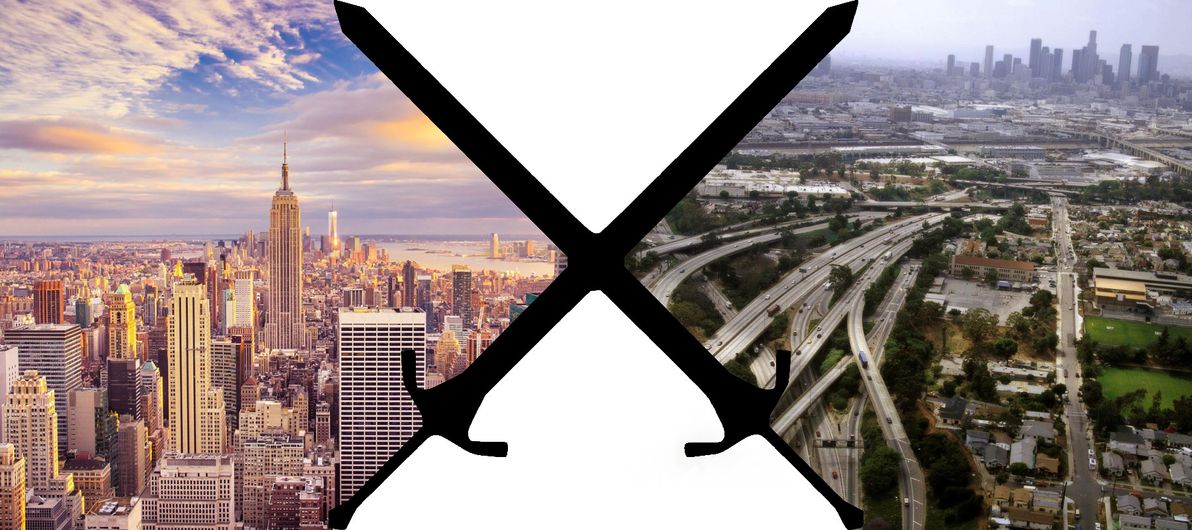
Image sources: Short Term Rentals NYC, Megalopolis Now.
The two biggest urban areas in Uncle Sam, New York (pop: 23.7m) and Los Angeles (pop: 18.7m), differ in many ways apart from just being on opposite coasts. Both are economic and cultural powerhouses: NYC with its high finance and its music / theatre prowess; LA with Hollywood and show biz. The City That Never Sleeps likes to think of itself as the beating heart of the USA (and indeed the world!), while the City of Angels doesn't take itself too seriously, in true California style.
These are the two biggest, but they are by no means the only big boys in town. The nation's next-biggest urban areas – Chicago, Washington-Baltimore, San Francisco Bay Area, Boston, Dallas, Philadelphia, Houston, Miami, and Atlanta (all with populations between 6m and 10m) – are spread out all across the continental United States, and they're all vibrant cities and key economic hubs.
Vietnam: Ho Chi Minh and Hanoi
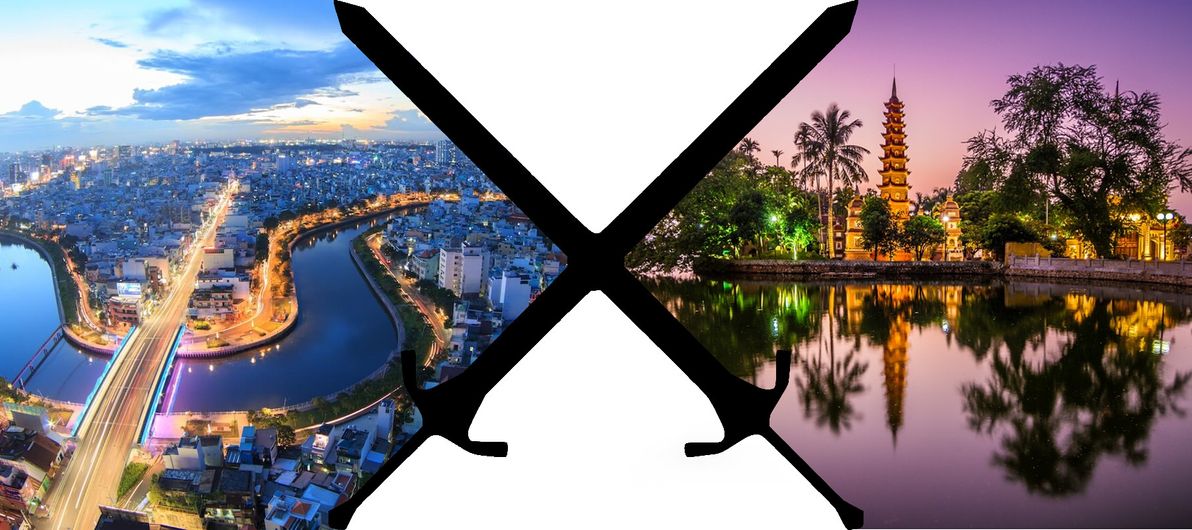
Image sources: Pullman Hotels, Lonely Planet.
Finally, in the long and thin nation of Vietnam, the two river delta cities of Ho Chi Minh (pop: 8.2m) in the south, and Hanoi (pop: 7.6m) in the north, have for a long time been the country's key twin hubs. During the Vietnam War, these cities became the respective national capitals of the independent Democratic South and Communist North Vietnam; but these days, Vietnam is well and truly unified, and north and south fly under the same flag.
Conclusion
That's it, my non-authoritative list of rival top cities in various countries around the world. I originally included more pairs of cities in the list, but I culled it down to only include cities that were very closely matched in population size. Numerous other contenders for this list consist of a City A that's bigger, and a City B that's smaller but is more famous or more historic than its twin. Anyway, hope you like my selection, feedback welcome.
Crossed swords image source: openclipart.
]]>